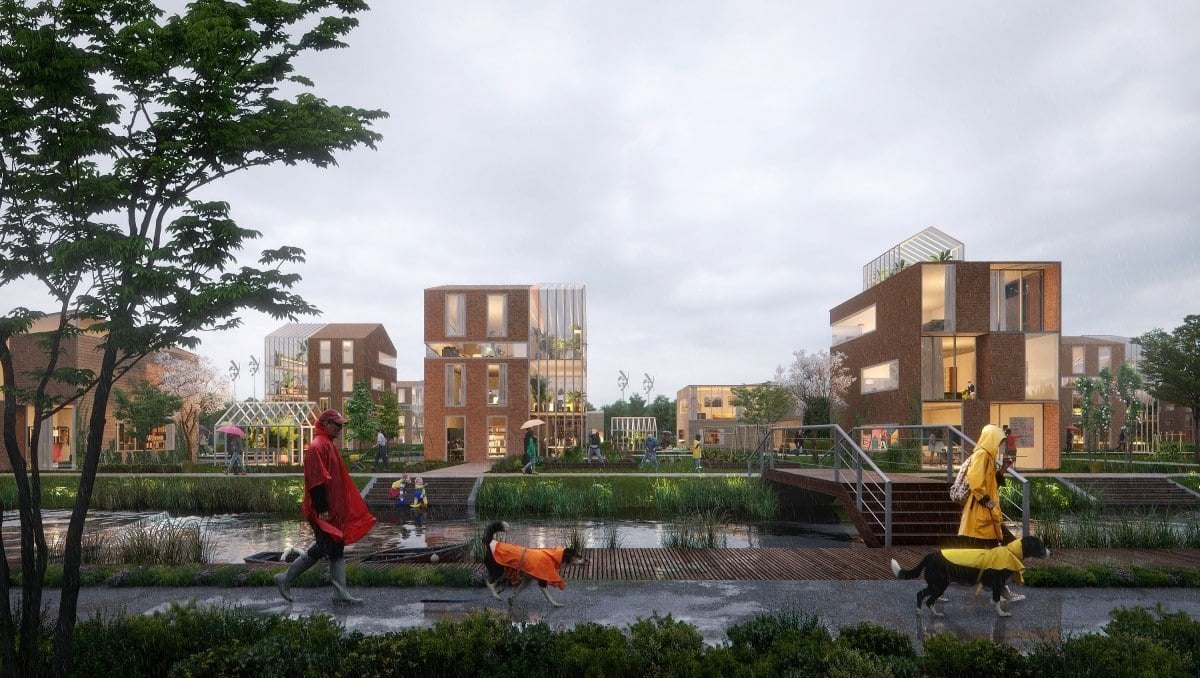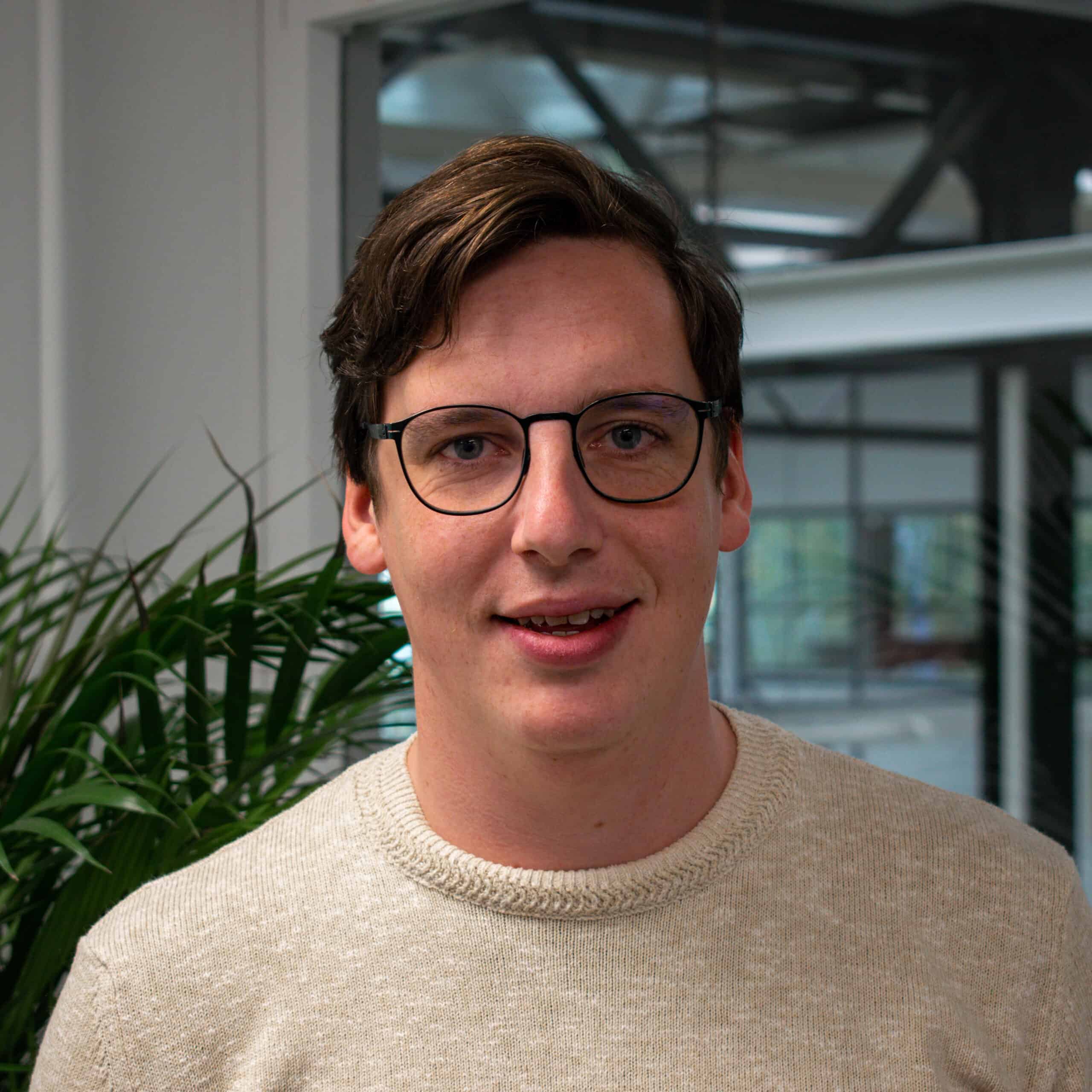
How do you build the smartest district in the world? With this question and dream in the back of her mind, Elphi Nelissen started preparing in 2016. The answer: it’s not a one-man job, considering the plans for the Brainport Smart District. These plans are becoming reality in the coming years, 150 hectares of land will be converted into a smart and sustainable district in Helmond.
The district will include 1500 homes, cosy courtyards where the elderly can live and support each other and a sustainable house, built by a student team of Eindhoven University of Technology, Team CASA. There will be a lot of diversity as there will be possibilities to build your self-designed house but also to rent social housing and the opportunity to as well live, as work in the district. 12 Hectares of ground will be reserved for companies. Living and working will be mixed and intertwined with each other, so there will be no seperate business park next to the residential area. A lot of interesting opportunities arise with this new district, while some may want privacy in their garden, others like to garden together with their neighbours. All of this will be possible.
“The residents are even looking forward to the rain, since they know that all the rainwater will be reused.”
EXAMPLES & DATA
The Brainport Smart District is by no means the first or only district to aiming to be the ‘smartest in the world’. Google, for example, has plans to build a district in Toronto and an abundance of sensors have been installed in Busan, South Korea. There are multiple examples that teach you what to do what not to do. “There is a reason that there are no private parties involved with the foundation. Google in Toronto is an example of how not to do it,” says Peter Portheine, one of the directors of the Brainport Smart District Foundation. He is also not impressed with the Busan example: “In South Korea, the country of gadgets, they try to monitor everything with sensors, but the quality of life is not necessarily improved by this. But how should it be done? “The relevance of all this technology truly finds meaning when working together with the inhabitants. We also want them to feel encouraged to criticise us when needed.”
A main point of criticism on Toronto’s district is the fact that Google collects all the data. At the district in Helmond this is most definitely not the intention, but the question remains, how do you ensure that inhabitants of the smartest district in the world still have their privacy? “Of course, everything will comply with the General Data Protection Regulation (GDPR), however, that is not considered special. There will be a public/private data platform and companies always need explicit permission to extract or use the data from it. As a resident of the district, there is no need to have this data collected and this is why you can indicate that you don’t want to share anything.” In addition, there will be an administrative body that will monitor the data collection within the district: “They will also continue to check whether it is ethically desirable to keep collecting and analysing data.”
“In South Korea, the country of gadgets, they try to monitor everything with sensors, but that doesn’t necessarily improve the quality of life.”
COLLABORATIons
In order to distribute the entire area and make it truly ‘smart’, cooperation is sought with companies and knowledge institutions. To steer this in the right direction, pitch rounds are organised, in which companies can show what they want to add to the neighbourhood. After, further consultation with companies will take place and the best may actually carry out their plan. There are already six parties that are going to work out their plans in Helmond:
- Ecarcell – A platform that allows you to lease an electric car with neighbours.
- Omines – A data platform that allows you to share and analyse realtime data from sensors.
- Hendriks Coppelmans – This construction group will build a neighbourhood of 140 self-sufficient homes that generate enough energy to charge the electric car.
- Livin Concepts – Livin Concepts wants to provide people with a ‘house for life’, a home and supporting environment so people can live independently for a long time.
- UNsense – Unsense wants to create a ‘Living Lab’ in the Brainport Smart District, an environment consisting out of 100 households sharing data to improve the district.
- Team CASA – This student team from Eindhoven University of Technology is going to build a house in Helmond that is as sustainable as possible and of course, comfortable to live in.
“The companies known in the area, such as the social housing corporation Woonbedrijf, also have to go through the pitch rounds,” says Portheine. “Woonbedrijf wants to look at circular building in the neighbourhood, by using the remains of demolished houses as raw material for new ones.”
The plan is to work with many parties for experimental purposes: “We are going to connect Brainport Smart District with all the local resources. For example with TU/e Innovation Space. We are going to give the university’s student teams a place to experiment. What we’re creating here could be applicable worldwide. This way, we’re also creating economic value.”
“With new technology we can sharpen and improve ourselves, but we’re not just talking about efficiency, but also about the other. This way the district will exceed being smart and become intelligent.”
NOT ONLY A TECHNOLOGICAL MASTERPIECE
It sounds very promising, this sustainable tech-neighbourhood and the student team ideas, but ultimately the neighbourhood has to make sure its residents are happy and satisfied. Fortunately, this point was not forgotten in the ‘master plan’ presented by the Dutch architectural firm UNStudio. Founder Ben van Berkel: “With new technology we can sharpen and improve ourselves, but we’re not just talking about efficiency, but also about the other. This way the district will exceed being smart and become intelligent. Showing a photo of people in the rain: “The residents are even looking forward to the rain, since they know that all the rainwater will be reused.”
This is why the Technology University of Eindhoven and also the Tilburg University are participating in the Brainport Smart District Foundation. They didn’t just think about the technology itself, but also its impact on the residents of a district. The Helmond city council member, Cathalijne Dortmans, also emphasises the social character of the district: “This is not a project for the ‘happy few’ and the ‘early adaptors’. This is why we are delighted that social housing will also be part of the district. Brainport Smart District isn’t just about technology, but also takes the social aspect into account: What does this district do to people? It is an experiment, some things will work, others will fail. This is what will make it the smartest district, we’ll learn from our mistakes.

